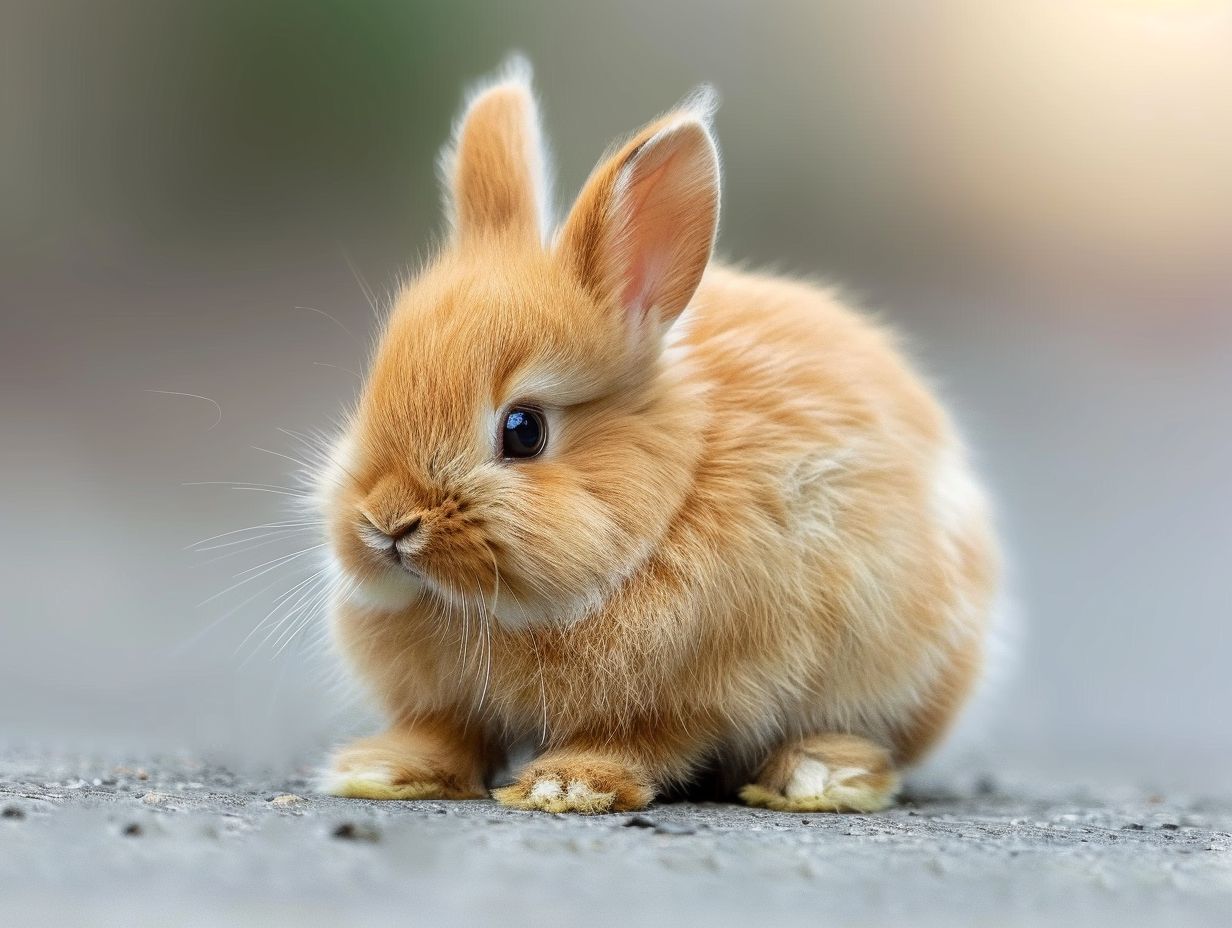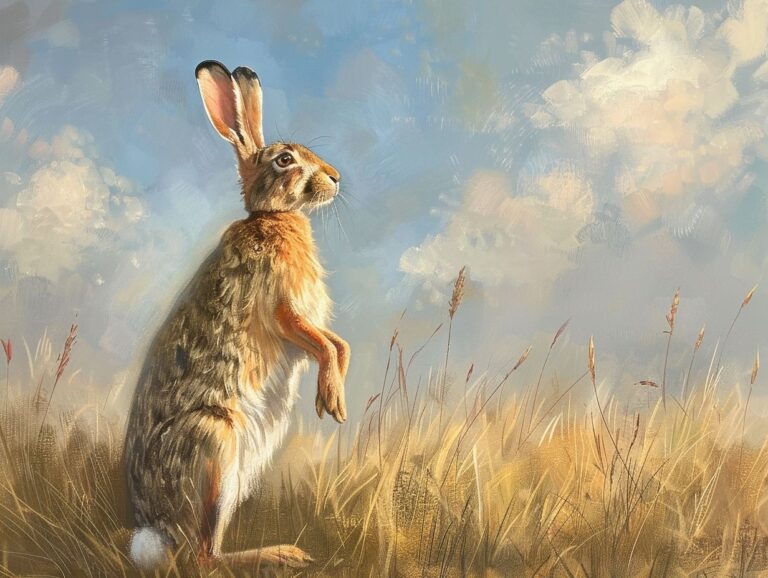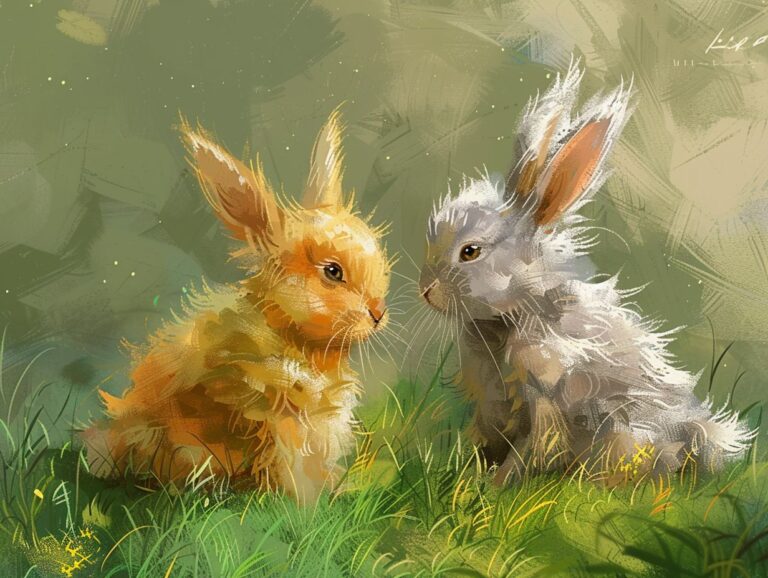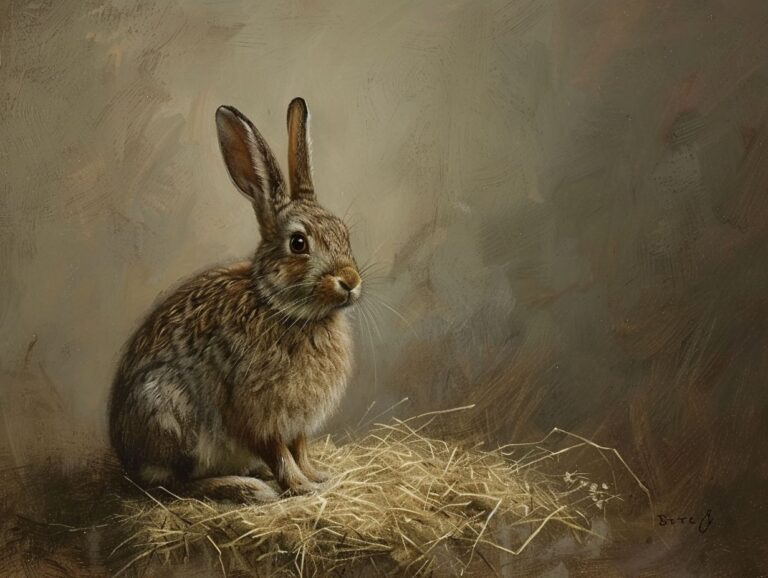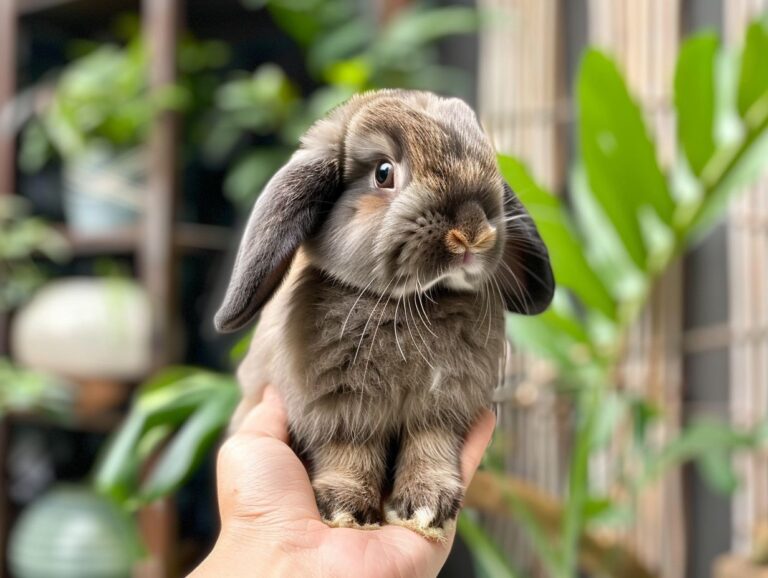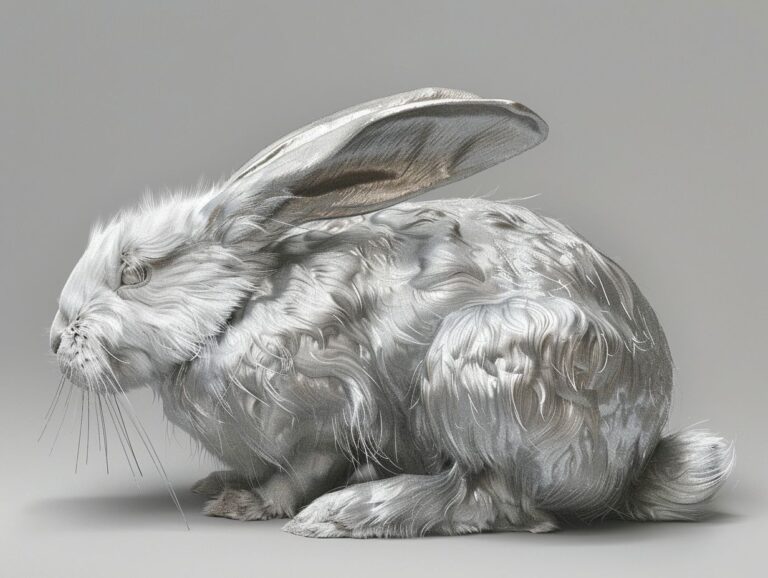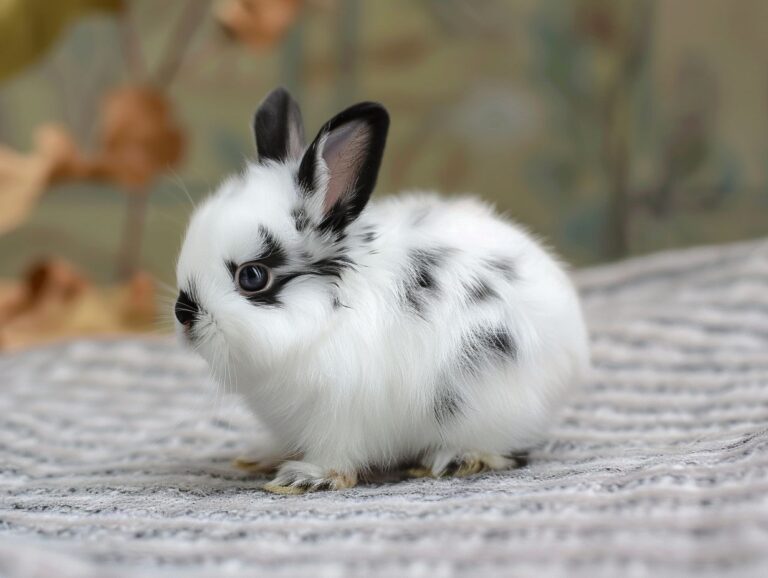Himalayan Rabbit Breed: Characteristics, Care, History, and Breeding Practices
Have you ever heard of the Himalayan rabbit breed? These beautiful creatures are known for their distinctive coat color, body shape, and gentle temperament.
This article explores the characteristics of Himalayan rabbits, their history, and how to properly care for them. From housing and diet to grooming and exercise, all the essentials to ensure your furry friends live a happy and healthy life are covered.
Delve into breeding practices for Himalayan rabbits, including selecting breeding stock, mating, caring for newborn kits, and more. Whether you’re a seasoned rabbit owner or considering adding a Himalayan rabbit to your family, this article has everything you need to know!
Key Takeaways:
What Is the Himalayan Rabbit Breed?
The Himalayan rabbit is a distinctive breed known for its unique markings and elegant appearance. Originating from the Himalayas, this breed has captured the attention of breeders and enthusiasts alike.
Legend has it that the Himalayan rabbit’s development traces back to the majestic Himalayan mountain range in Asia, where it was believed to be specifically bred to withstand the harsh climate of its origin. Its striking white fur with colored points on its ears, feet, tail, and nose set it apart from other breeds, adding to its allure. Over time, breeders have refined and perfected the breed, enhancing its distinct features further.
Enthusiasts are drawn to the Himalayan rabbit’s calm, friendly temperament and easy maintenance, making it an appealing choice for both novice and experienced rabbit owners. This breed’s popularity has steadily grown in the rabbit community, thanks to its combination of beauty and wonderful personality traits.
What Are the Characteristics of Himalayan Rabbits?
Himalayan rabbits are known for their stunning coloration, featuring shades of black, blue, chocolate, and lilac, along with distinct markings and bright red eyes. Their elegant body shape and fur texture make them stand out among other rabbit breeds.
Their color patterns are a result of a temperature-sensitive gene that causes their fur to darken on cooler parts of their body, such as the ears, nose, feet, and tail, while remaining lighter on the warmer areas. This striking contrast creates a visually striking appearance that appeals to many breeders and enthusiasts.
Coat Color
The coat color of Himalayan rabbits is a fascinating aspect of this breed, with shades ranging from black to blue, chocolate, and lilac. These colors are accentuated by their distinctive white markings, creating a striking contrast that defines the breed’s appearance.
Himalayan rabbits are known for their distinctive color patterns with the darker hues concentrating on their ears, feet, tail, and nose while the rest of the body displays the lighter shades.
Breeders meticulously select for these specific color variations to maintain the breed standards set by various rabbit breeding associations globally. Each coloration plays a crucial role in upholding the breed’s elegance and beauty.
Body Shape and Size
Himalayan rabbits have a graceful body shape that complements their elegant markings. Their size is moderate, striking a balance between agility and sturdiness, making them ideal for both show and companionship.
The breed standard for Himalayan rabbits emphasizes their well-proportioned bodies, reflecting a harmonious blend of elegance and strength. Their bodies are sleek and elongated, with a medium build that showcases their agility in movement.
The markings on a show-quality Himalayan rabbit must adhere to specific guidelines, with distinct color points on the ears, nose, feet, and tail. These markings contribute to the overall beauty and appeal of the breed in the show ring.
Temperament
The Himalayan rabbit is known for its gentle temperament and sociable nature, making it a popular choice among pet owners and breeders alike. Their curious and friendly demeanor adds to their charm and appeal.
These rabbits are often described as affectionate and calm, forming strong bonds with their owners. Their sociable nature makes them fantastic companions for families looking for a gentle pet. Himalayan rabbits are known to be relatively easy to handle and have a docile disposition, which also makes them ideal for first-time pet owners. When used in show competitions, their calm demeanor and cooperative behavior make them a pleasure to work with. Their adaptability to different environments and friendly interactions with humans contribute to their reputation as excellent pets and show rabbits.
What Is the History of Himalayan Rabbits?

These rabbits are believed to have originally descended from a breed known as “Angora,” brought to America by early settlers. In California, breeders like Elmer Rice and Alex Dougan played pivotal roles in shaping the Himalayan breed as we know it today. Through selective breeding practices and careful attention to detail, they were able to enhance the breed’s distinctive color patterns and gentle temperament.
The Himalayan rabbit’s unique fur coloration, with its striking dark points on the ears, nose, tail, and feet, is a result of careful genetic manipulation perfected over decades in the United States. The breed’s debut in American Rabbit Breeders Association (ARBA) shows in the mid-20th century marked a significant milestone in recognizing the breed’s standing within the rabbit breeding community.
How to Care for Himalayan Rabbits?
Caring for Himalayan rabbits involves providing them with a suitable living environment, a balanced diet, regular grooming sessions, and opportunities for exercise and enrichment. By addressing their specific needs, owners can ensure the well-being and happiness of these unique rabbits.
Regarding housing requirements, Himalayan rabbits prefer spacious enclosures with room to hop around and explore. Providing hiding spots and tunnels can also stimulate their natural behavior. For their dietary considerations, a diet rich in fresh hay, leafy greens, and quality pellets is essential. Grooming practices include regular brushing to prevent matting of their distinctive fur. Engaging these rabbits in exercise routines through toys and interactive play can help keep them mentally and physically stimulated.
Housing and Environment
Providing a warm and comfortable housing environment is crucial for Himalayan rabbits, especially due to their sensitivity to cold temperatures. Creating a safe and stimulating living space promotes their well-being and supports their healthy development.
Warmth and protection are essential for Flemish Giant Patagonian rabbits, as they are prone to hypothermia. It’s advisable to place their shelter in a draft-free location, away from direct sunlight.
Insulating materials such as straw or hay can be used to line their living quarters, helping retain heat. Incorporating hiding spots and toys for mental stimulation is crucial for their overall welfare. Providing chew toys, tunnels, and platforms can keep them active and prevent boredom-related behaviors.
Diet and Nutrition
Maintaining a balanced diet is essential for the health and vitality of Himalayan rabbits. Providing a mix of high-quality hay, fresh vegetables, and commercial rabbit pellets ensures they receive the necessary nutrients for optimal well-being.
Dietary requirements for Himalayan rabbits:
- High-quality hay should make up the majority of their diet, as it aids in digestion and keeps their teeth properly worn down.
- Fresh vegetables like leafy greens and carrots provide essential vitamins and minerals.
- Commercial rabbit pellets offer additional nutrients, but should not be the main component of their diet.
It’s important to balance these food types to prevent obesity and ensure proper digestion. Feeding schedules should include a daily mix of hay, vegetables, and pellets, with portion sizes adjusted based on the rabbit’s size and activity level.
Grooming
Regular grooming is essential to maintain the luxurious fur of Himalayan rabbits in prime condition. Brushing their coat gently and inspecting their pelt for any signs of matting or health issues helps keep these rabbits healthy and comfortable.
Brushing Himalayan rabbits’ coat regularly not only promotes healthy fur growth but also prevents matted fur, which can lead to discomfort and potential skin issues. Grooming sessions provide an opportunity to bond with these beautiful creatures, helping to build trust and strengthen your relationship with them. Proper coat care also ensures that their soft fur remains free of dirt, debris, and parasites, contributing to their overall well-being and longevity.
Exercise and Enrichment
Encouraging regular exercise and mental stimulation is vital for the overall health and happiness of Himalayan rabbits. Providing them with ample space to hop, explore, and engage in enriching activities helps fulfill their natural behavioral needs.
Physical exercise is essential for maintaining your Himalayan rabbit’s cardiovascular health and muscle tone. Offering opportunities for them to scamper through tunnels, climb ramps, or play with safe chew toys can keep them active and prevent obesity.
Mental stimulation is just as critical as physical exercise for these intelligent creatures. Introduce puzzle feeders, hiding treats around their environment, or setting up obstacle courses to challenge their minds. For more information on the Belgian Hare rabbit breed, explore their characteristics, care, history, and breeding practices.
Creating a rabbit-friendly environment involves ensuring their living space is safe and well-equipped. Incorporate hiding spots, platforms, and tunnels for exploration and play. Ensuring a balanced diet rich in fiber, such as hay and leafy greens, also contributes to their well-being. For more information on the polish rabbit breed, including characteristics, care, history, and breeding practices, click here.
Remember to spend quality time interacting with your Himalayan rabbit daily, as socialization and bonding are key factors in their mental and emotional health. By prioritizing exercise, mental enrichment, and a stimulating habitat, you can provide your Himalayan rabbit with a happy and fulfilling life.
What Are the Breeding Practices for Himalayan Rabbits?

When selecting breeding stock for Netherland dwarf rabbit breed, breeders look for individuals with well-defined color points that are consistent with the breed standard. These color points, typically seen on the ears, nose, tail, and feet, are a hallmark of Himalayan rabbits. By choosing rabbits with these characteristic markings, breeders aim to ensure the continuation of the breed’s signature appearance.
Genetic inheritance plays a significant role in determining the coat color and markings of Himalayan rabbits. Through careful breeding practices and understanding of genetic traits, breeders can predict the outcomes of mating pairs and selectively pair rabbits to enhance desirable traits.
Selecting Breeding Stock
When selecting breeding stock for Himalayan rabbits, breeders look for individuals with double copies of the albino gene to produce offspring with the desired coat color and markings. The careful evaluation of genetic traits ensures the propagation of quality Himalayan rabbits.
Breeders consider other essential criteria when choosing breeding stock, such as overall health, temperament, and body conformation. Ensuring that the chosen rabbits are free from hereditary diseases and have a good reproductive history is paramount for maintaining a successful breeding program.
Besides focusing on the gene combinations that contribute to the breed’s distinctive appearance, breeders also strive to optimize genetic diversity within the Himalayan rabbit population. This diversity not only aids in preserving the breed’s unique characteristics but also helps in minimizing the risk of genetic disorders due to inbreeding.
Mating and Pregnancy
The mating and pregnancy process in Himalayan rabbits requires careful monitoring to ensure successful reproduction and healthy offspring. Breeders oversee the mating rituals and provide adequate care to pregnant rabbits to support a smooth gestation period.
Breeding practices play a crucial role in facilitating successful reproduction in Alaskan rabbit breed. To promote mating, breeders often introduce the male and female rabbits gradually, allowing them to get acquainted with each other.
It is essential to create a conducive environment for mating, ensuring minimal stress for the rabbits. Once the mating occurs, breeders carefully monitor the female rabbit for signs of pregnancy, which typically lasts around 31 days. Refer to the New Zealand rabbit breed for more information on characteristics, care, history, and breeding practices.
During pregnancy, providing a balanced diet rich in nutrients and ensuring access to clean water is vital for the health of the pregnant rabbit and the developing offspring.
Caring for Newborn Kits
Caring for newborn kits of Himalayan rabbits involves creating a safe and warm nest environment, providing access to maternal care and nourishment. Monitoring the kits’ growth and development is essential to ensure their health and survival during the early stages of life.
One key aspect of nurturing newborn kits is to establish a secure nesting area where the mother can comfortably nurse and bond with her young ones. The nest should be lined with soft bedding material, such as hay or shredded paper, to ensure warmth and comfort. Ensuring that the nest is placed in a quiet and secluded area away from disturbances can help reduce stress for the mother rabbit and her kits.
Health and Genetic Considerations
Maintaining the health and genetic integrity of Himalayan rabbits is essential for preserving the breed’s unique characteristics. Regular health checks, genetic testing, and disease prevention strategies play a crucial role in ensuring the well-being of these rabbits.
Regular monitoring is key to catching any health issues early on. Engaging in genetic testing helps breeders make informed decisions to promote genetic diversity within the population.
Breeders must stay vigilant against common diseases that can affect Himalayan rabbits, such as dental problems and respiratory issues. Implementing strict hygiene protocols and providing a balanced diet are fundamental in preventing illnesses.
Selling and Showing Himalayan Rabbits
Selling and showing Himalayan rabbits is a common practice amongst breeders and enthusiasts, especially in California where the breed has a significant presence. Participating in rabbit shows and exhibitions allows breeders to showcase the beauty and excellence of their Himalayan rabbits.
These exhibitions provide a platform for breeders to display their top-quality Himalayan rabbits, highlighting distinctive fur coloring and breed standards. Breeders meticulously groom their rabbits before the show, ensuring they are in optimal condition for judging. Visitors to these events can also learn about the history and characteristics of the Himalayan breed, fostering greater appreciation for these elegant creatures.
Frequently Asked Questions
What are the characteristics of the Himalayan Rabbit Breed?
The Himalayan Rabbit Breed is known for its distinctive pointed markings, typically with a white body and dark points on the nose, ears, feet, and tail. They have a medium-sized, compact body with a rounded head and short, upright ears. They also have a soft, dense coat that requires minimal grooming.
How should I care for a Himalayan Rabbit Breed?
Himalayan rabbits are relatively low-maintenance pets, but they do require daily care. This includes providing a clean and spacious living area, fresh water and food, and regular exercise. Their nails should be trimmed every month and their teeth checked for overgrowth. It is also important to provide them with enrichment activities to prevent boredom.
What is the history of the Himalayan Rabbit Breed?
The Himalayan Rabbit Breed originated in the Himalayan region of Asia, specifically in the countries of Tibet, Nepal, and China. They were first bred for their fur, which was used in the production of clothing and accessories. The breed was introduced to Europe in the 19th century and was recognized by the American Rabbit Breeders Association in 1924.
Can I breed Himalayan rabbits at home?
Yes, Himalayan rabbits can be bred at home, but it is important to have a thorough understanding of rabbit breeding practices. This includes providing proper nutrition, a safe and comfortable breeding area, and proper care for the pregnant doe and her litter. It is recommended to seek advice from a knowledgeable breeder before attempting to breed Himalayan rabbits.
What are the breeding practices for Himalayan rabbits?
The breeding practices for Himalayan rabbits involve carefully selecting healthy and genetically diverse breeding pairs. It is recommended to breed rabbits of the same breed, and to avoid interbreeding within the same family line. The gestation period for Himalayan rabbits is around 31 days, and litters can range from 2-8 kits.
Are Himalayan rabbits suitable for first-time rabbit owners?
Yes, Himalayan rabbits can make great pets for first-time rabbit owners. They are generally calm, docile, and easy to handle. However, it is important for new owners to do research and learn about proper care and handling techniques to ensure the well-being of their pet. It is also recommended to adopt a rabbit from a reputable breeder or rescue organization.

